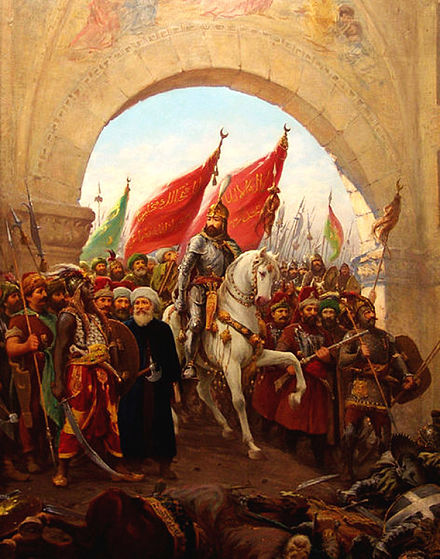1453
The Fall of Constantinople
On May 29, 1453, the troops of the Turkish Sultan Mehmet II broke through the defences of Constantinople and completed the conquest of the city. Michael Paleologus, the last ruler of the Roman Empire died fighting before the city was comprehensively sacked and its inhabitants sold into slavery. The great Church of Holy Wisdom, Hagia Sophia, was immediately turned into a mosque. The most sacred relic of eastern Christians, the Hodegetria, a portrait of Mary and the baby Jesus supposedly painted by Luke the Evangelist, was chopped into bits for the gold in its frame.
By that time, Constantinople, once the grandest city on the planet, was only a hollow shell of its former self and the Roman Empire, of which it had been its capital, was reduced to a few scattered holdings. But the capture of the city had enormous political and symbolic importance. Both the Turks and the Russians claimed to be the heirs of Byzantium. Mehmet styled himself the Kayser-i-Rum, “Roman Emperor” and decreed that his next conquest would be Rome itself. The ruler of Muscovy, Ivan III, married a Byzantine princess and declared that he was the successor of Orthodox supremacy, appropriating the title of Czar, or “Caesar”. The flood of exiles from the city who found refuge in Italy brought with them manuscripts and a knowledge of Greek that helped fuel a second stage in the Renaissance. Turkish expansion brought with it a strangling of the trade between Asia and Europe, encouraging Europeans to embark on direct voyages to the East rather than relying on Islamic middle men; the expeditions of Columbus and Vasco da Gama are results of the fall of Constantinople.
Today, visitors to Constantinople, called “Istanbul” by the Turks, can visit a tiny enclave in the Fener district by the Golden Horn and see the compound of the Patriarch of Constantinople, the last remaining official of the Roman Empire.
